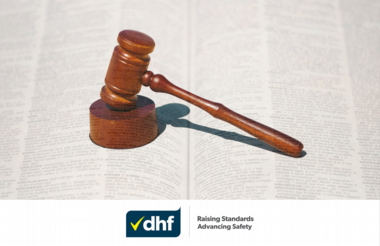
The significance of standards in relation to the law
All aspects of human life: management, education, health, education, energy, transport, aerospace, environment, electricity, gas, fire, and security, together with all aspects of engineering are controlled and managed by the use of standards. The earliest standards related to dimensions (e.g: Whitworth screw threads) or materials and, while these still exist and are still important, modern standards that are produced to support legislation relate primarily to performance.
So, who produces these standards?
Not governments, not civil servants, or even bureaucrats within standards bodies. Standards are produced by committees of volunteers from the appropriate industry or service sector. These include manufacturers, trade bodies, consumer organisations, regulators, insurers, architects, housing associations, test laboratories and even, in some cases, police and fire services. BSI convene UK committees, CEN do the same in Europe, although CEN committees are actually made up of representatives from CEN members national standards bodies, which still includes BSI. These British and European standards bodies also dovetail with global standards bodies like ISO; in all cases standards bodies operate independently from governments.
In the UK, BSI committees produce British (BS) standards, CEN committees produce EN standards for Europe, and global ISO committees produce international standards. If a standard has a BS EN ISO prefix, it is an internationally produced standard that has been adopted by CEN for Europe, and then adopted by BSI as a British standard. The people who write standards are industry experts who understand the product, technology, or service, but also understand the markets and environments in which they are used or applied. Standards committees work by consensus, they discuss, argue, deliberate, and finally agree on the content; interestingly, mostly in English. Consensus in this regard means an “absence of sustained opposition” rather than just an acceptance of a majority opinion so committees have to work hard to reach agreement.
What about the law?
In the UK and Ireland, legislation (the law) in the form of government acts, statutory instruments, and national regulations, are developed by national governments and are usually performance setting in nature. They use terms like reasonable, practicable and suitable (or in the case of machinery, the term state-of the-art is used), but do not generally provide the technical detail or precise definitions. In the field of doors, gates and barriers, critical pieces of criminal legislation (the law) include:
What is the role of standards?
In most cases, the technical performance detail needed for legal compliance is left to standards, the contents of which are seen as reasonable, practicable, sufficient, or the state-of-the-art, because experts drawn directly from the appropriate sectors have collectively produced and agreed the contents.
In the field of doors, gates and barriers, critical standards (setting the performance detail) include:
The EN standards shown above are published in the UK by BSI with a BS prefix and in the RoI by NAI with an IS prefix. Many more exist, commonly referenced by the main standards shown above.
What about codes of practice and other guidance material?
In addition to national and international standards, there are also government guidance documents like the UK Government Approved Documents for Building Regulations compliance, Government Approved Codes of Practice (ACOP), and codes of practice published by trade bodies etc. These are all examples of guidance on compliance with the law and can be used to gauge compliance. As an example of this, when a door company was prosecuted under the UK HSWA 1974 following a rolling shutter fatality, the case summary noted the company’s failure to take note of the freely available DHF guidance.
In the door, gate and barrier industry, standards play an important part in defining measures for the safety of people, safety in the event of fire, security, and environmental control. For powered industrial doors, garage doors, vehicle gates and barriers, EN 12453 is the central standard, other standards cover pedestrian entrance systems. First published in 2000, EN 12453 was revised in 2017 and then amended slightly in 2021; it has seen very little change in its 23 year life. It provides the precise detail of what is deemed safe for people who might be affected by goods and vehicle entrance systems and vertically acting doors over pedestrian entrances. The current version is BS EN 12453:2017+A1:2021 in the UK and IS EN 12453:2017+A1:2021 in the RoI; the contents are identical except for the national foreword.
So, is it a legal requirement to use EN 12453?
Technically not usually1, but it will be necessary to arrive at an equal or better degree of safety in order to demonstrate compliance with the appropriate law. When there has been a death or injury incident, the standard is used by government investigating authorities like HSE or Trading Standards to determine if the legally required reasonably practicable measures have been taken by those responsible for compliance and safety. We know this from the list of prosecutions in the door and gate industry over the last 23 years. In the 20 or so criminal prosecutions that DHF has been involved in or have record of, the system in question was not in compliance with the standard and the standard was referenced in the investigation. Conversely, we have only ever seen one serious injury incident involving a compliant system, but there was no criminal prosecution in that case. That one incident was however significant in the 2017 revision of EN 12453; it led to a tightening of the rules around draw-in protection on sliding gates.
Standards also provide a level playing field for industry; they allow producers to compete on equal terms whilst ensuring basic safety and environmental standards for users, and provide a clear and identifiable base line for contracts and clients.
10th October 2023
Join dhf
Enjoy the full benefits of dhf membership
Apply today